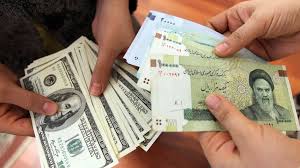Publisher: Maaal International Media Company
License: 465734
Removing four zeros from the Iranian currency: Each new rial will now be equivalent to 10,000 rials
With the continued collapse of the Iranian currency and rising inflation rates, many are raising questions about the meaning of removing zeros and the impact this measure will have on the Iranian economy, particularly on inflation and purchasing power, following the announcement today that four zeros will be removed from the Tehran currency.
Removing zeros from the currency is a technical procedure in which the old currency is replaced with a new one with a lower nominal value. This removes a number of zeros from the currency without changing its real value.
In the Iranian case, each new rial will be equivalent to 10,000 current rials, divided into 100 qirans, a similar subunit equivalent to a cent. $100 will now be equivalent to 9,250 new rials, instead of 9 million previously. However, this remains a purely psychological issue and does not affect the currency’s purchasing power or inflation, economists assert.
اقرأ المزيد
In May, the governor of the Central Bank of Iran, Mohammad Reza Farzin, stated that the Iranian rial “does not have a positive image” in the global economy. It’s worth noting that the proposal to remove zeros was first proposed in 2019 before being withdrawn.
The Iranian rial has experienced a historic decline in its value against the US dollar in recent years, affected by economic sanctions, faltering monetary policies, and geopolitical tensions.
In 2025, the black market exchange rate for the dollar reached approximately 925,000 rials, reflecting the magnitude of the collapse in the value of the national currency, highlighting the challenges facing the Iranian economy, and prompting the acceleration of steps such as removing zeros to facilitate transactions and improve the symbolic image of the monetary system.
Despite the official use of the rial, Iranians have for years used the toman (the name of the national currency during the Shah’s era before the Islamic Revolution) in their daily lives, which is equivalent to removing a zero from the rial. This discrepancy between the rial and the toman confuses foreign visitors and reflects the complexity of Iran’s monetary system, as reported by CNN.
The government is seeking to simplify this reality and unify monetary concepts by removing zeros, although some temporary confusion is likely to persist until the new rules become entrenched in daily transactions. Removing zeros does not address the true causes of inflation, such as the expansion of the money supply, weak production, and foreign sanctions, but it does contribute to facilitating transactions and reducing the psychological burden associated with large numbers.
Removing zeros is viewed as an administrative and symbolic measure to improve the currency’s overall image, not as a radical solution to the problem of inflation or currency weakness.
In this regard, Hakim Mamkan, spokesman for the Iranian Parliament’s Economic Committee, says that the goal of removing zeros is to “facilitate transactions and audits within state institutions,” not to control inflation.
According to the Statistical Center of Iran, the annual inflation rate reached 35.3% as of July 2025, an increase of 0.8% from the previous month, confirming the continued pressures on citizens’ living standards despite monetary proposals. This measure is similar to that taken by other countries, such as Turkey (which removed six zeros in 2005), Venezuela, Zimbabwe, and Israel, all of which were attempting to control inflation and improve their currencies’ international image. In this context, discussions are underway in Syria regarding a proposal to adopt a “new Syrian pound” by removing two or three zeros from the current currency, in an attempt to contain the effects of rampant inflation, which reached 119.7 percent in the first quarter of 2023.
Lebanon has taken a different approach after removing zeros, with the Banque du Liban announcing its intention to issue new banknotes of 500,000 and 1 million pounds, with the aim of facilitating daily transactions in light of the sharp collapse of the national currency. Countries aim to remove zeros to simplify the monetary system by facilitating accounting operations and reducing the complexity of daily transactions, especially in economies suffering from chronic inflation.








